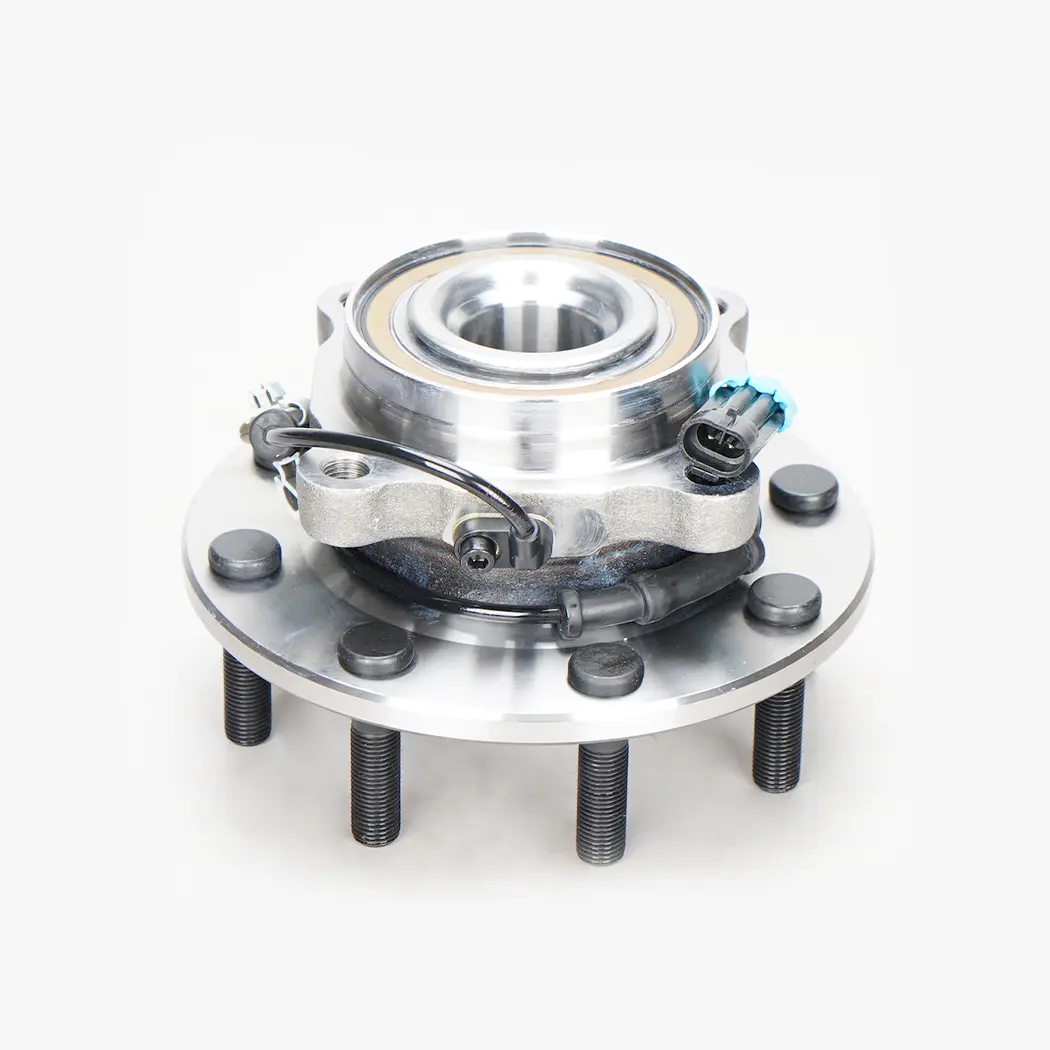A wheel hub unit, also known as a wheel hub assembly, is an integral component in modern automotive engineering. It combines several critical parts into a single pre-assembled unit, typically including the hub, wheel bearing, and in many cases, an ABS (Anti-lock Braking System) sensor. Its main role is to connect the wheel to the vehicle’s suspension and facilitate smooth wheel rotation while supporting the vehicle’s weight.
Structure and Components of a Wheel Hub Unit
A typical wheel hub unit is composed of the following elements:
Hub Flange:
This is the part where the vehicle’s wheel and brake rotor are mounted. It contains wheel studs or bolts and forms the central connection between the wheel and the rest of the suspension system.
Wheel Bearing:
Housed within the hub, the bearing is a set of precision ball or tapered roller bearings that allow the wheel to rotate smoothly with minimal friction. It is usually sealed and pre-lubricated to prevent contamination and reduce maintenance needs.
ABS Sensor (if equipped):
Many modern wheel hub units are equipped with an integrated ABS sensor and tone ring. This sensor monitors wheel speed and transmits data to the vehicle’s ABS and stability control systems.
Mounting Assembly:
The entire hub unit is bolted to the vehicle's knuckle or suspension arm, forming a strong and secure link between the rotating wheel and the stationary suspension components.
Primary Functions of a Wheel Hub Unit
Wheel Support and Alignment:
The hub unit ensures the wheel is held in place securely and remains aligned with the rest of the vehicle.
Rotation and Load Bearing:
It facilitates the free rotation of the wheel while also bearing vertical and horizontal loads from acceleration, braking, and cornering.
Drive Torque Transmission (for driven wheels):
In front-wheel and all-wheel-drive systems, the hub unit transfers torque from the driveshaft to the wheel, enabling movement.
Safety Monitoring:
Through ABS integration, it provides critical data to maintain braking safety, especially during emergency stops or on slippery surfaces.
Types of Wheel Hub Units (Generational Classification)
Generation 1 (Gen 1):
A simple bearing pressed into the knuckle
Requires separate components and more complex installation
Common in older vehicles
Generation 2 (Gen 2):
Combines the bearing and flange into one assembly
More compact and easier to install
Often includes a magnetic encoder for ABS systems
Generation 3 (Gen 3):
Fully integrated system with hub, bearing, and ABS sensor
Features a bolt-on design for quicker replacement
Common in modern vehicles due to ease of maintenance and durability
Common Issues with Wheel Hub Units
Like any mechanical component, wheel hub units are subject to wear and eventual failure. Common symptoms include:
Grinding or humming noise from the wheel area, especially when turning
Excessive play or looseness in the wheel
Uneven tire wear
ABS warning lights due to sensor malfunction
Vibrations in the steering wheel or chassis
Maintenance and Replacement
Wheel hub units are generally non-serviceable components, especially in later generations. Once the bearing or sensor fails, the entire assembly must be replaced. Proper torque during wheel installation and regular suspension checks can help prolong hub unit life.
